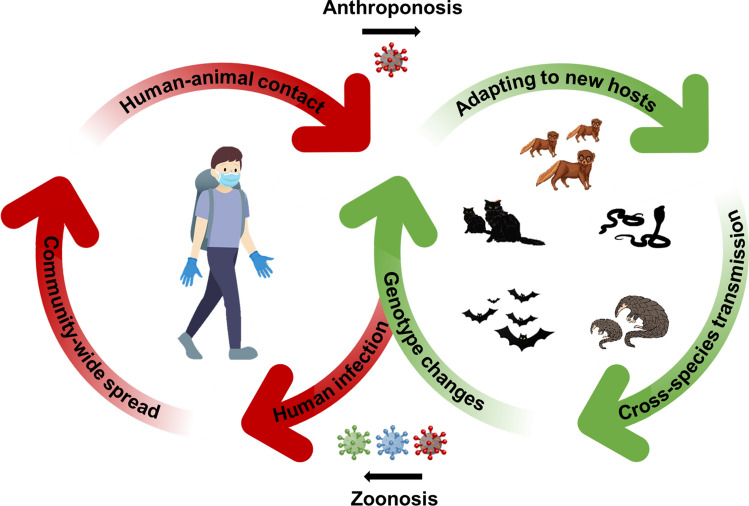Fig. 1.
Virus transmission from wildlife to human (zoonosis), human to wildlife (reverse zoonosis or anthroponosis) and then back to human (reverse anthroponosis). Back-and-forth transmission of SARS-CoV-2 between humans and animals is likely to induce more mutations and adaptation of the virus, leading to novel strains that could be deadlier than original strains. Spontaneous behaviors of wild species such as foraging, predation, mating and defecating enable both in-species and cross-species transmission, facilitating genotype changes and evolution of SARS-CoV-2 in various wildlife reservoirs. Mutated viruses may then spillover to humans again through different natural or intermediate hosts, forming a dangerous loop of zoonosis, anthroponosis and reverse anthroponosis of an evolving virus between human and animal hosts. Once transmitted to humans, those novel strains will pose significant challenges for infection control by causing reinfections, re-emergent outbreaks and rendering current vaccines less effective

